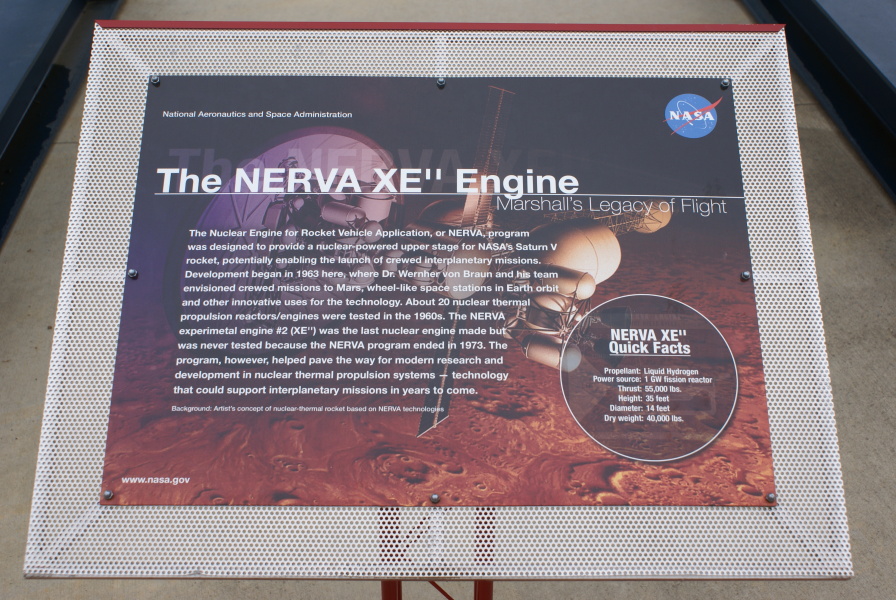| Prev |
heroicrelics.org Marshall Space Flight Center Site Index NERVA Engine Gallery |
Next |
dsc84058.jpg
The sign accompanying the NERVA. It reads
The NERVA XE'' Engine
Marshall's Legacy of Flight
The Nuclear Engine for Rocket Vehicle Application, or NERVA, program was designed to provide a nuclear-powered upper stage for NASA's Saturn V rocket, potentially enabling the launch of crewed interplanetary missions. Development began in 1963 here, where Dr. Wernher von Braun and his team envisioned crewed missions to Mars, wheel-like space stations in Earth orbit and other innovative uses for the technology. About 20 nuclear thermal propulsion reactors/engines were tested in the 1960s. The NERVA experimental engine #2 (XE'') was the last nuclear engine made but was never tested because the NERVA program ended in 1973. The program, however, helped pave the way for modern research and development in nuclear thermal propulsion systems – technology that could support interplanetary missions in years to come.
NERVA XE'' Quick Facts
Propellant: Liquid Hydrogen Power source: 1 GW fission reactor Thrust: 55,000 lbs. Height: 35 feet Diameter: 14 feet Dry weight: 40,000 lbs

| Time picture taken | Thu Jul 19 11:10:40 2012 |
| Location picture taken |
Building 4205 Marshall Space Flight Center Huntsville, AL |
| Prev |
heroicrelics.org Marshall Space Flight Center Site Index NERVA Engine Gallery |
Next |